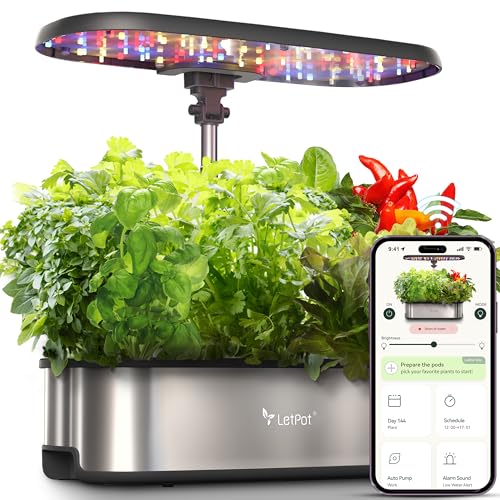If you’ve ever wanted fresh mint for tea, basil for pasta, or rosemary for roasted potatoes, growing herbs at home is the easiest way to start. Herb gardening doesn’t require a big yard — a sunny windowsill, balcony, or a small corner on the terrace is enough. In this guide, you’ll learn how to set up a simple, low-maintenance herb garden that stays productive all year.
Why Grow Your Own Herbs?
- Fresh flavor on demand: Clip what you need, when you need it.
- Budget friendly: A single plant can replace dozens of store-bought packs.
- Low maintenance: Most herbs prefer light watering and plenty of sun.
- Compact: Works in apartments, balconies, and small patios.
The Best Starter Herbs
For beginners, choose herbs that are forgiving and fast-growing:
- Basil: Loves warmth and full sun; perfect for salads, pesto, and pasta.
- Mint: Very hardy; great for tea and desserts (plant in its own pot to avoid spreading).
- Parsley: Grows well in partial sun; a staple garnish.
- Rosemary: Drought tolerant; ideal for roasts and breads.
- Thyme: Compact, aromatic, and easy to care for.
- Cilantro (Coriander): Cool-season herb; great for salsas and soups.
Sun, Soil, and Water — The Basics
Light: Aim for 6–8 hours of direct sunlight. A south-facing window or a bright balcony is ideal.
Soil: Use a high-quality potting mix with good drainage. Avoid heavy garden soil in containers.
Water: Keep soil slightly moist, not soggy. Most herbs prefer to dry out a bit between waterings.
Drainage: Ensure pots have holes and add a saucer to protect surfaces.
Pot Sizes and Containers
- Individual pots (12–20 cm): Great for mint, basil, and parsley.
- Window boxes (long planters): Good for thyme, oregano, and chives.
- Fabric grow bags: Excellent drainage and root health.
- Self-watering planters: Useful if you travel or forget to water.
Planting: Seeds vs. Starter Plants
- Seeds: Cheaper and fun to start; basil, parsley, and cilantro germinate quickly.
- Starter plants: Faster harvests and less guesswork for beginners.
Tip: Label each pot so you remember what’s where — small stakes or tape works.
Feeding and Pruning
- Fertilizer: Use a balanced liquid fertilizer at half strength every 3–4 weeks during active growth.
- Pruning: Pinch tips regularly to encourage bushy growth.
- Basil: Pinch above the second set of leaves; remove flower buds to keep flavor strong.
- Mint/Parsley: Cut outer stems first; let the center keep growing.
Common Problems and Simple Fixes
- Yellow leaves: Often overwatering — let soil dry slightly before watering again.
- Leggy stems: Not enough light — move to a brighter spot or supplement with a grow light.
- Slow growth: Refresh the top 2–3 cm of soil and feed lightly.
- Pests: Rinse leaves with water and use a mild, food-safe insecticidal soap if needed.
Product Spotlight
Indoor Herb Garden Kit with Grow Light
If your space doesn’t get enough natural sun or you want reliable results, an all-in-one herb kit with an integrated LED grow light makes life easier. It includes seed pods, a nutrient solution, and a built-in timer so your herbs get consistent light every day. Perfect for kitchens, dorms, or apartments.
- PATENTED SMART HYDROPONIC SYSTEM: Take your indoor gardening to the next level with our patented smart hydroponic system…
- 3X FASTER LED GROWING SYSTEM: Experience lightning-fast plant growth with our hydroponic growing system, featuring a tru…
- PROFESSIONAL 2 GROWING MODES: Enjoy the flexibility of two different LED lighting modes with our hydroponic growing syst…
Simple Weekly Routine
- Check moisture: Water when the top 2–3 cm of soil feels dry.
- Rotate pots: Quarter turn weekly for even growth.
- Harvest lightly: Trim small amounts two to three times a week to keep plants dense.
- Feed sparingly: Half-strength fertilizer once a month in cooler seasons, twice in peak growth.
Quick Harvest & Storage Tips
- Harvest in the morning for peak aroma.
- Don’t strip the plant: Take no more than one-third of the growth at a time.
- Short-term storage: Wrap herbs in a damp towel and refrigerate in a container.
- Long-term: Air-dry bunches upside down or freeze chopped herbs in olive oil cubes.
Final Thoughts
Herb gardening is the easiest gateway to a greener, tastier home. Start with two or three beginner-friendly herbs, give them good light, and harvest regularly. Whether you use a sunny window or a compact grow-light kit, you’ll enjoy fresh flavor all year — with minimal effort.


